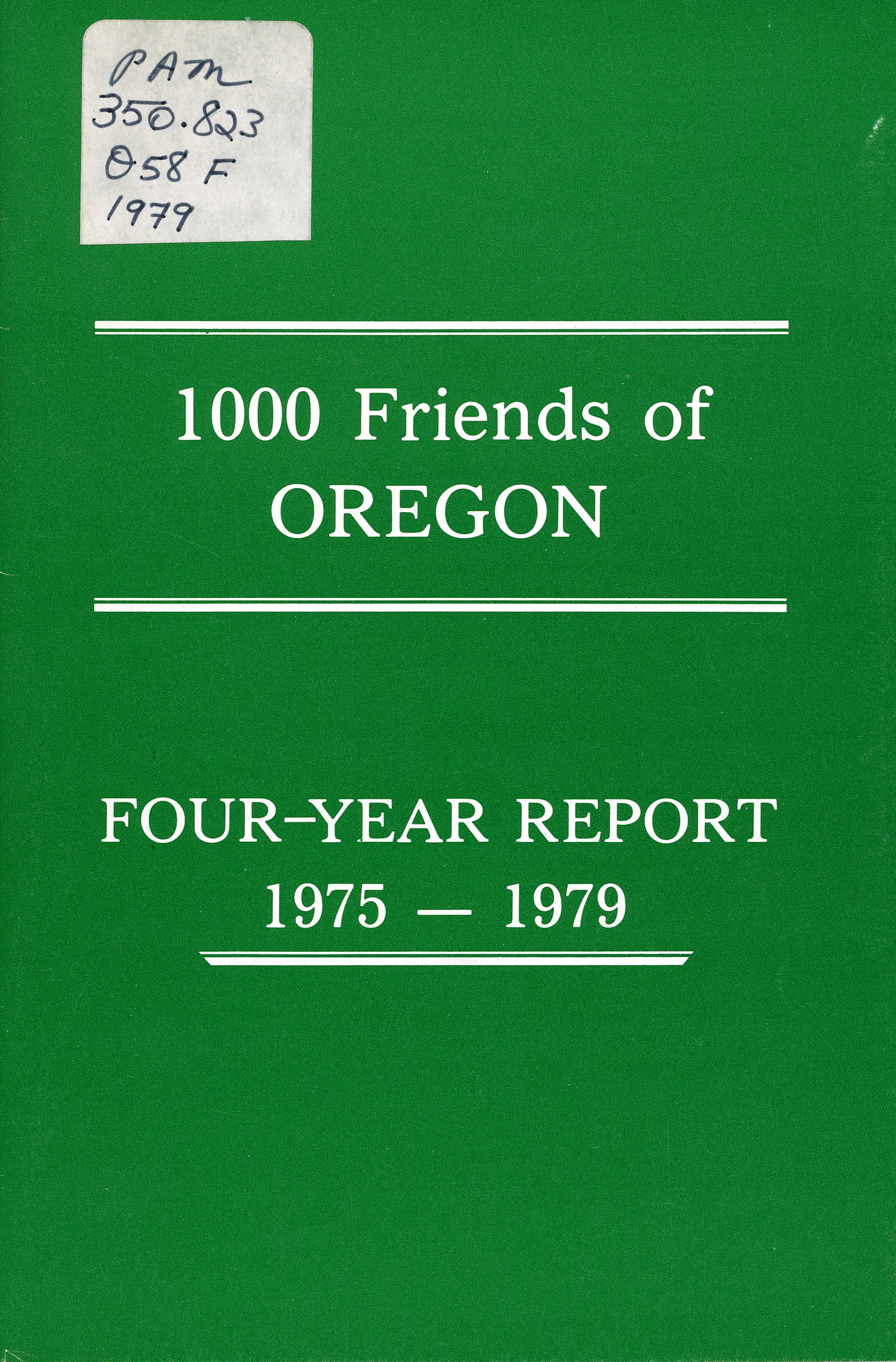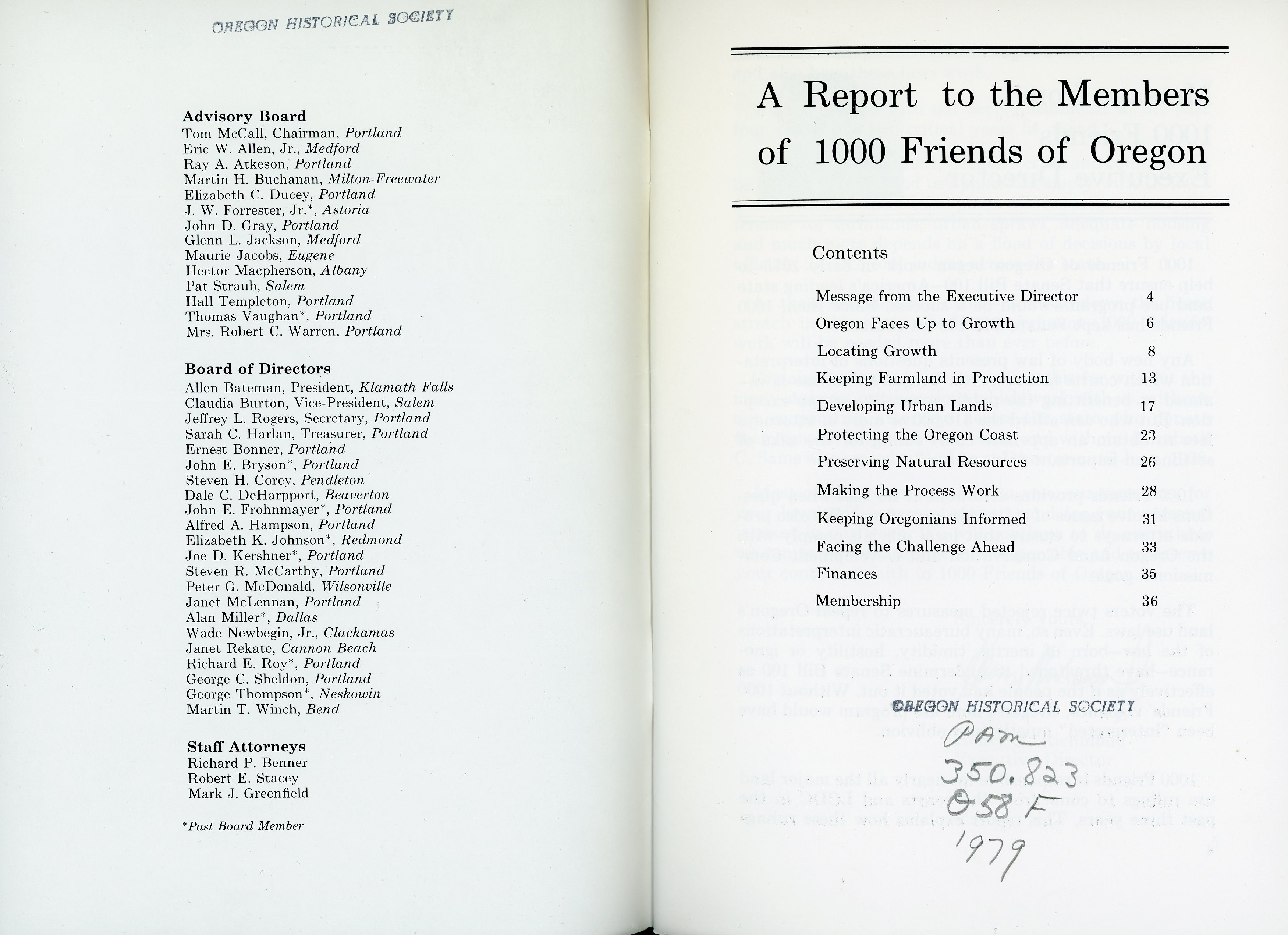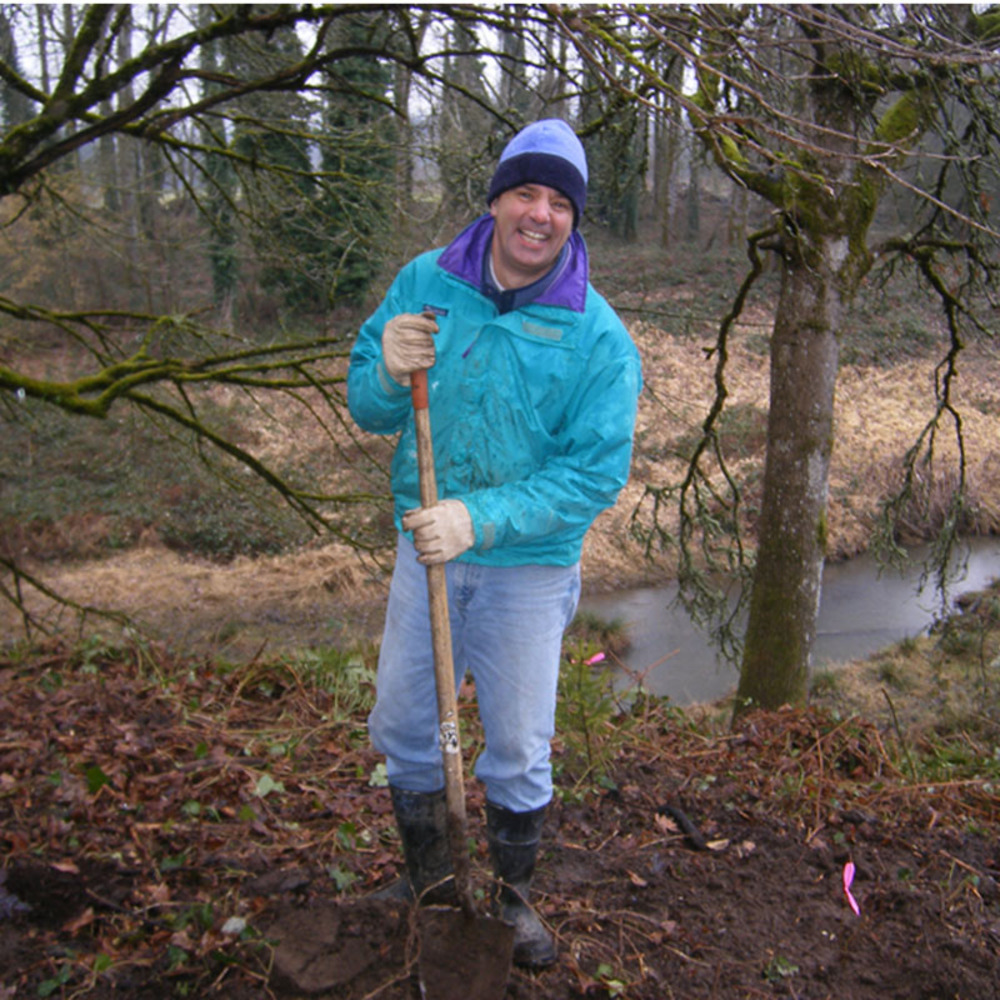1000 Friends of Oregon was founded in 1975 by Governor Tom McCall and attorney Henry Richmond as a nonprofit watchdog organization advocating for and ensuring adherence to Senate Bill 100, Oregon’s recently adopted land-use law. Richmond was the first executive director, followed by Robert Liberty, Bob Stacey, and Jason Miner. Over nearly four decades, 1000 Friends has had a profound impact on Oregon land use, holding local and state governments to account, strengthening resource land protections, resisting efforts to weaken statewide planning, and ensuring that the system is responsive to change.
Focusing on reviewing city and county planning polices and zoning and subdivision regulations, 1000 Friends challenged noncompliance with mandatory state planning goals. The organization used a cooperating attorney program to expand capacity to file appeals in order to secure judicial decisions that clarified and strengthened land-use policy. Through this process, they achieved tighter urban growth boundaries (UGB), higher allowable zoning densities, and stricter limitations on development of farm and forest lands. 1000 Friends prevented resort developments at Smith Rock, Cannon Beach Dunes, and Metolius River Basin and defeated a proposed subdivision on the north moraine of Wallowa Lake. They also successfully fought attempts to overturn the land-use program with the defeat of three ballot measures in 1976, 1978, and 1982.
By 1986, all local land-use plans in Oregon had been approved, so 1000 Friends turned its attention to monitoring performance. They produced a Map of Shame showing the extent of rural land in the Willamette Valley zoned for sprawl and initiated studies of county plans and their administration, which led to stronger protections for the most productive resource land (e.g., farm and forest land). Working with the Home Builders Association of Metropolitan Portland, 1000 Friends assessed and facilitated regional efforts to meet affordability and density goals.
1000 Friends actively engaged in developing the Oregon Transportation Planning Rule (TPR), an administrative rule used to implement the Statewide Planning Transportation Goal. The rule sets expectations for reductions in vehicle miles traveled (VMT), forcing consideration of the relationship between land use and transportation. The TPR was the context for 1000 Friends’ collaboration with Sensible Transportation Options for People (STOP). They challenged plans in 1988 to develop a highway to the west of Portland, outside the UGB, out of concern that a new road would lead to congestion, sprawl, and the loss of farmland.
With funding from the Energy Foundation, the Federal Highway Administration, and others, 1000 Friends undertook a multi-year study (1991-1997) called Land Use, Transportation and Air Quality (LUTRAQ). Parsons Brinckerhoff, a planning and engineering firm, was hired to produce the study, which demonstrated that an alternative land-use and transportation plan that included light rail and compact urban design could result in a reduction in VMT. The Oregon Department of Transportation approved the plan, and supporting land-use policies were adopted in regional and local plans. LUTRAQ won a national award from the American Planning Association in 1996.
1000 Friends’ dominance in land-use matters was challenged in 1989 when Oregonians in Action (OIA), a property-rights organization, decided to concentrate on fighting land-use regulations. In 2000, OIA took the lead in voter-approved Measure 7, which provided property owners with compensation or relief from new regulations that decreased property values. When the Supreme Court overturned Measure 7, it was replaced by Measure 37 in 2004, generating 7,700 claims on nearly 800,000 acres at a value of $20 billion by the end of 2007. 1000 Friends provided essential leadership in securing passage of Measure 49 in 2007, which limited the development rights granted in Measure 37.
In 2006 and 2007, in collaboration with the Bus Project and fifty other organizations, 1000 Friends facilitated Envision Oregon, which engaged more than 2,200 people in discussions about shared values. Those discussions resulted in Blueprint for Oregon’s Future, which articulates goals associated with economic security, improved health, and protection of special places. Key strategies are enumerated along with action items for legislative attention. Particular emphasis is given to the challenges posed by climate change with a focus on transportation and development alternatives to reduce greenhouse gas emission.
Many other states have looked to Oregon for inspiration in developing their own land-use policies and the importance of the watchdog function has been apparent. The 1000 Friends model has been replicated elsewhere, including in Florida, Iowa, New Mexico, Washington, and Wisconsin.
-
![]()
1000 Friends of Oregon report, 1975-1979.
Courtesy Oreg. Hist. Soc. Research Library, PAM350
-
![]()
1000 Friends of Oregon board members, 1979.
Courtesy Oreg. Hist. Soc. Research Library, PAM350
-
![]()
1000 Friends of Oregon on Senate Bill 100, 1979.
Courtesy Oregon Hist. Soc. Research Lib., PAM350
Related Entries
-
![Senate Bill 100]()
Senate Bill 100
Signed into law on May 29, 1973, Oregon Senate Bill 100 created an inst…
-
![SOLVE (SOLV)]()
SOLVE (SOLV)
Since its founding in 1969, SOLVE (formerly SOLV) has worked to clean u…
-
![Thomas William Lawson McCall (1913-1983)]()
Thomas William Lawson McCall (1913-1983)
Tom McCall, more than any leader of his era, shaped the identity of mod…
Related Historical Records
Map This on the Oregon History WayFinder
The Oregon History Wayfinder is an interactive map that identifies significant places, people, and events in Oregon history.
Further Reading
Adler, Sy. "The Oregon approach to integrating transportation and land use planning." In Planning the Oregon Way: A Twenty-Year Evaluation, edited by Carl Abbott, Deborah Howe and Sy Adler, 121-146. Corvallis, Ore.: Oregon State University Press, 1994.
1000 Friends of Oregon. "Reports & Publications." www.friends.org/resources/reports






